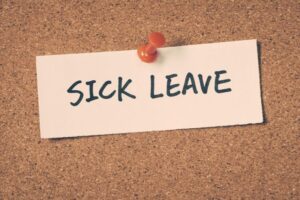A third of employers fail to measure the impact of sickness on their business, research shows
A third of employers are failing to record the impact sickness absence has on their business, research has shown.
Data by Group Risk Development (GRiD) shows that although 85% of employers record the sickness absence of their staff, only 63% measure the impact that employees’ sick leave has on their business.
GRiD, the industry body for the group risk sector, said this may be due to the increase of hybrid working making it harder to measure.
 The organisation has warned this hole in measurement means employers will fail to spot issues, make strategic changes to mitigate the impact sickness or prevent it in the first place.
The organisation has warned this hole in measurement means employers will fail to spot issues, make strategic changes to mitigate the impact sickness or prevent it in the first place.
Katharine Moxham, spokesperson for GRiD, said: “It’s surprising that some employers do not record absence at all, but concerning that so many don’t appreciate the benefit of understanding how staff absence affects their organisation.
“It is possible to manage sickness absence effectively, and prevention is always better than cure.
“No matter how an organisation records and manages its staff absences, one thing that unites all employers is the need to reduce staff sick days and in turn reduce the impact on the organisation as a whole.”
GRiD believes instead of taking sick leave like they previously may have done, some employees may now instead want, or feel compelled, to work for a few hours or a short day when working from home. Not only is this more complex for employers to monitor but it is also difficult to record.
Of those companies that do measure the impact that sickness absence has on their business, 56% measure the cost of lost time – e.g. hours/days, 46% measure the cost of sick pay provision – e.g. Statutory Sick Pay and salary costs, and the same number measure the cost of lost productivity.
The research showed just 38% of businesses asked measure indirect costs, such as colleagues covering work, learning time, management time and 35% measure the direct costs such as for temps and agency fees.
Katharine Moxham added: “We advocate employers working closely with their employee benefits providers and advisers to determine the best methods to manage staff absence and to support staff back into the workplace.
“This works at both a macro level when analysing data and trends but also at individual employee level when helping specific staff to make a safe and successful return to the workplace.
“There’s a lot of support available to help with absence management within health and wellbeing benefits, and especially within group risk benefits – employer-sponsored life assurance, income protection and critical illness.
“It makes sense to utilise it to the full.”
A third of employers fail to measure the impact of sickness on their business, research shows
A third of employers are failing to record the impact sickness absence has on their business, research has shown.
Safety & Health Practitioner
SHP - Health and Safety News, Legislation, PPE, CPD and Resources 
 The organisation has warned this hole in measurement means employers will fail to spot issues, make strategic changes to mitigate the impact sickness or prevent it in the first place.
The organisation has warned this hole in measurement means employers will fail to spot issues, make strategic changes to mitigate the impact sickness or prevent it in the first place.